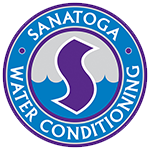Nitrate & Nitrite
Nitrates occur naturally; however, the major sources of nitrates or nitrites in drinking water include fertilizer, sewage, and feedlots. The toxicity of nitrate in humans is due to the body’s reduction of nitrate and nitrite.
These contaminants can cause methemoglobinemia (blue baby syndrome). Therefore, notifying your baby’s pediatrician of these levels is advisable. Nitrates and nitrites are nitrogen-oxygen chemical units which combines with various organic and inorganic compounds. Once taken into the body, nitrates are converted into nitrites. The greatest use of nitrates is as a fertilizer.
How Are They Regulated?
The MCLG for nitrates has been set at 10 parts per million (ppm), and for nitrites at 1 ppm, because EPA believes this level of protection would not cause any of the potential health problems described below. Based on this MCLG, EPA has set an enforceable standard called a Maximum Contaminant Level (MCL). MCLs are set as close to the MCLGs as possible, considering the ability of public water systems to detect and remove contaminants using suitable treatment technologies.
The MCL for nitrates has been set at 10 ppm, and for nitrites at 1 ppm, because EPA believes, given present technology and resources that is reasonably achievable.
How Are They Tested?
A colorimetric test that can be done in the field is based this is upon Cadmium Reduction outline in Standard Methods. Nitrate is reduced almost quantitatively to nitrite in the presence of Cd by diazotizing with sulfanilamide and coupling with N-(1-napthyl)-ethylenediamine dihydrochloride to form a highly colored azo dye that is measured using a colorimeter.
Laboratories analyzing drinking water samples typically run nitrate via EPA method 300.0. A small volume of sample, typically 50-100 uL, is introduced into an ion chromatograph. The anions of interest are separated and measured, using a system comprised of a guard column, separator column, suppressor device, and conductivity detector.
Water Treatment Options
The following treatment methods have been approved by EPA for removing nitrates/nitrites: Ion exchange, Reverse Osmosis, Electrodialysis. Ion exchange utilizes an anion resin designed to selectively remove nitrate. Electrodialysis involves a membrane process, which involves ions being transported through semi permeable membrane under the influence of electric potential.
Contact Sanatoga Water Conditioning To Learn More Or To Schedule A Consultation.
Your Neighbors Love Their Cleaner, Safer, Better Water!
Our dedication to our customers is continually rewarded with referrals and testimonials about our water quality solutions!
